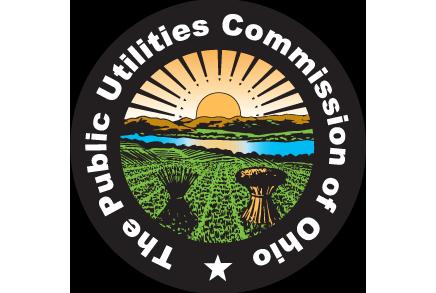
Growth in the U.S. solar market has slowed. Here's how to boost it.
Photo Credit: Shutterstock
Former Sungevity CEO Andrew Birch breaks down why American consumers are being charged two times more for solar than their peers overseas.
ANDREW BIRCH JANUARY 05, 2018
After 10 years running Sungevity, I recently completed a tour visiting solar companies in and around the U.S., Europe, Asia and Australia. I am pleased to report the residential solar industry is thriving around the world -- everywhere except right here in the U.S.
The reason for this is startlingly simple: American consumers are being charged over two times more for solar than is the average consumer overseas. That’s USD $10,000 more for a typical 5-kilowatt residential solar system. The panels are the same -- so what on earth is going on?
The answer: red tape.
Here in the land of technology leadership and free-market enterprise, American regulation has more than doubled the cost of solar.
The regulation comes in three un-American guises: permitting, code and tariffs -- and together they are killing the U.S. residential market. Modernizing these regulations, primarily at the local and state level, is the greatest opportunity for U.S. solar policy in 2018.
The Cost of Solar to a Homeowner in Australia vs. the U.S.

To highlight the opportunity, let’s look at Australia, where nearly 2 million solar systems have been successfully and safely installed.
As of early December, installed costs in the main Australian markets were at $1.34 per watt, compared to $3.25 per watt in the U.S. What does that difference stem from?
In Australia, there is no permitting process. You simply lodge your request for interconnection online and go install it. The figure below highlights the relative mass of valueless work required to satisfy current city-level bureaucracy in the U.S., which adds between two and six months to delivery time and 47 cents per watt of cost directly to the installed system. That’s more than the cost of the panels themselves!
Needless Permitting Work

Next is code. The Australian Clean Energy Council accredits all installers, approves the products, and runs a voluntary code of conduct, which allows businesses to market their commitment to best practice, and consumers to chose the best installers. That all sounds pretty American to me.
However, the U.S. National Electrical Code dictates a best practice that more than doubles the installation time relative to Australia, and adds incremental hardware expense -- together adding 49 cents per watt to the cost of solar. There is no discernable difference in the quality and safety of solar installations overseas relative to the U.S.
What a Difference a Code Makes

There are no tariffs on imported hardware in Australia because it’s obvious to all that the jobs in solar are in sales and installation, not in manufacturing. That’s another 21 cents per watt in the Australians' pocket -- and a thousand dollars back into the economy per system sold.
And because solar is so much cheaper, as well as faster and easier to buy, it’s also much cheaper, faster and easier to sell. Acquisition costs in Australia average $400 per installed customer, compared to $2,500 in the U.S.
At lower cost and without the two- to six-month wait time and all of the permitting complexity, cancellation rates are minimal, compared to an average of about 30 percent for reputable U.S. companies. How many other electronics purchases do you know of that take up to half a year to be installed? That’s another 42 cents per watt of lower solar costs.
The remaining delta of 31 cents per watt comes from good old-fashioned "bigger is better" math. The fact that solar is cheaper means there's more of it (elasticity), and the more you get of anything, the lower the cost (economies of scale). In this case, Australian installers leverage the fixed office costs and overhead across more system installs and more revenue, enabling them to lower the cost to the customer.
This brings us back to the delta between $1.34 per watt in the main Australian markets, compared to $3.25 per watt in the U.S. That's $1.91 per watt less.
Breakdown of Residential Solar Cost per Watt in Australia vs. U.S.

As a result, Australian solar is everywhere: low-income homes, middle-income homes and high-income homes. Following a record month of installs, Australia now has 1.8 million solar homes, which is already more than the entire U.S. Not bad for a country with a population equal to just Southern California (23 million). That’s 20 percent of the country’s population that is paying less for energy with clean solar energy.
This is aided by the fact that Australia has high electricity prices, but also by the fact that tariffs, codes and permitts are driving solar costs up.
It’s not just Australia: residential solar costs in Asia are at or below $1 per watt, lower still due to lower labor costs. India just added more solar rooftops than Australia this year, and more in the last year than in the previous four years. Ever the record-breaker, China has installed solar on over 900,000 roofs in the last 12 months, creating thousands of new high-growth technology companies along the way. And thousands of installers (including Sungevity’s European business) continue to thrive in Europe, where average costs are $1.90 per watt, nearly half that of the U.S.
In America, eight of the top 10 residential solar companies have failed or exited the market over the last few years (including the U.S. division of Sungevity). Only 1.5 percent of U.S. homes have solar installed. Growth in the U.S. residential market has turned negative, with installations recently falling 17 percent -- and that’s before a cut in tax equity supply and whatever new tariffs are added this year.
NREL cites “customer acquisition challenges” as the reason for the growth decline, highlighting a symptom, while entirely understating the underlying problem: Solar costs more than twice as much as it should in the U.S. because of red tape.
So what now?
What’s the solution? How do we cut the red tape? Can the U.S. regain leadership in the residential solar market?
Three regulatory changes can immediately half the cost of residential solar.
- Replace permits with online applications, a process that has been successfully demonstrated overseas.
- Remove the unnecessary elements of the NEC code that make no discernable impact on the resulting safety and quality of solar installations, as has also been proven overseas.
- Kill tariffs that kill domestic jobs and let the free market deliver high-quality, cheap panels.
We could more than halve the cost of solar with the stroke of a pen -- well, I guess that’s really three strokes of pen, but I’d take that.
Despite our entering the new year saddled with a protectionist federal government focused on prolonging outdated and uncompetitive combustion technology, the good news is that state and city policy dominates the solar opportunity. Federal tariffs currently represent only 20 cents of a roughly $2 problem.
I believe state governments can and should create state-based policy to replace permits with online applications to lower the cost of solar. Germany achieved that simple solution, which tells me that a technology leader like California can too. And the National Electrical Code is not a federal law -- it is a regionally adopted standard. States should think and act globally, choosing the proven data points from the largest solar markets overseas to quickly adapt and adopt simplified, safe solar code.
It’s important that we figure it out quickly. 2018 will see even more pressure on solar business and jobs in our communities, in complete contrast to the booming successes overseas. Solar, with storage following right behind, represents the single best opportunity to solve climate change and make low-cost energy available to all.
After too long playing defense against federal policy, this is a new opportunity to start playing offense, with the weight of global data behind us. We need to turn our focus to this local- and state-level opportunity to cut red tape and halve the cost of residential solar in the U.S And a new year is as good a time as any to get started.









